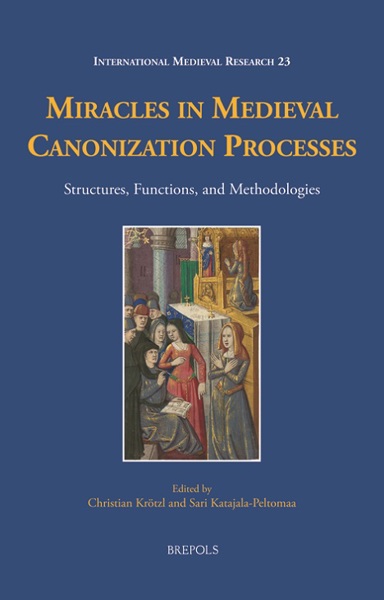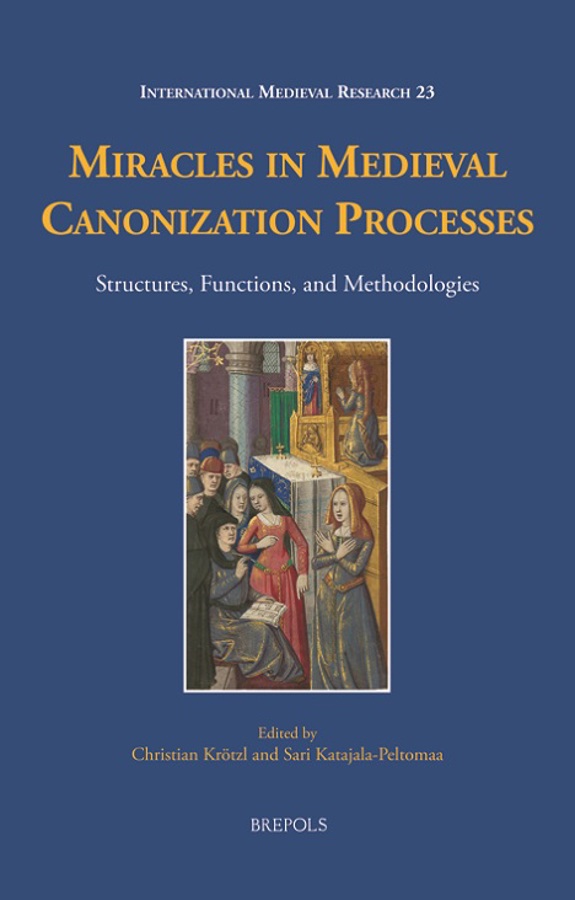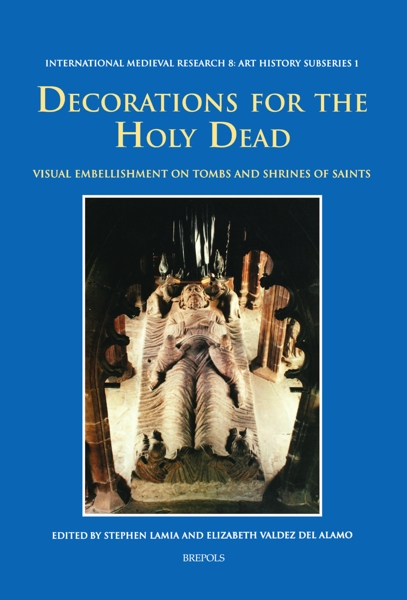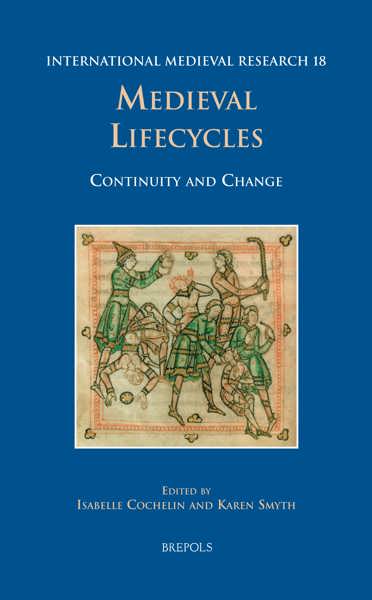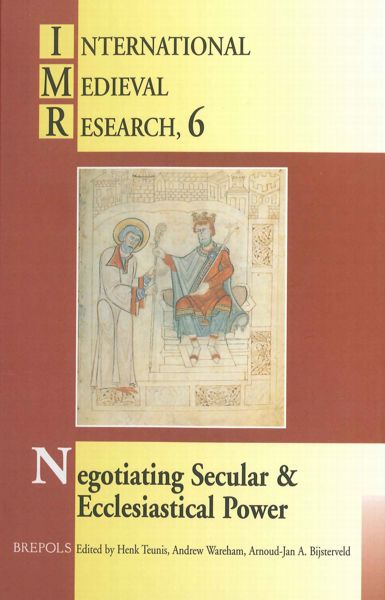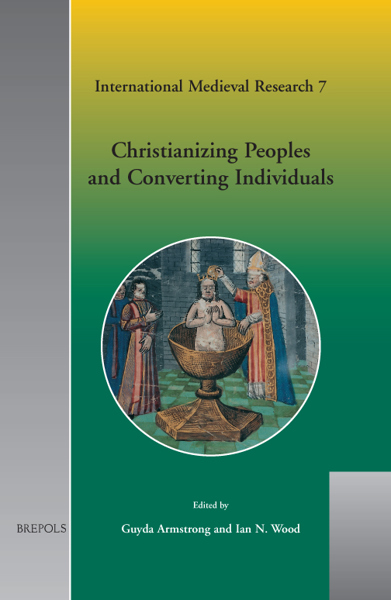
Miracles in Medieval Canonization Processes
Structures, Functions, and Methodologies
Christian Krötzl, Sari Katajala-Peltomaa (eds)
- Pages: ix + 292 p.
- Size:156 x 234 mm
- Language(s):English, French
- Publication Year:2018
- € 90,00 EXCL. VAT RETAIL PRICE
- ISBN: 978-2-503-57313-7
- Hardback
- Available
- € 90,00 EXCL. VAT RETAIL PRICE
- ISBN: 978-2-503-57314-4
- E-book
- Available
Offers a comprehensive methodological analysis of the structure and functions of miracle collections from the High and Late Middle Ages in Western Christianity.
“(...) the essays in this volume will serve to spark new, more creative, and more rigorous investigation into the tremendously rich sources left by medieval writers, promotors, and investigators of saints' cults.” (Rachel Koopmans, in The Medieval Review, 19.04.04)
“Insgesamt ein beachtenswerter, gelungener Band.” (Jörg Ulrich, in Historischen Zeitschrift, 309/3, 2019, p. 741)
“This book offers a comprehensive methodological analysis of the structure and functions of medieval miracle collections and canonization processes as well as working-tools for reading these sources.” (Studi Medievali, LX/II, 2019, p. 1058)
“Insgesamt zeigt der Band schlaglichtartig eine anregende Reihe unterschiedlicher Zugänge zum reichen Material der Wunder in spätmittelalterlichen Sammlungen auf, die künftig einer kritischen Interpretation dieser Quellengattung dienlich sein werden.” (Otfried Krafft, in Zeitschrift für Historische Forschung 46 (2019) 3, p. 491)
« En somme, les art. rassemblés dans cet ouvrage collectif très cohérent renseignent à la fois sur les usages et les conceptions du miracle à la fin du Moyen Âge mais aussi sur la manière dont l’autorité pontificale se construit en sélectionnant dans cette matière miraculaire ce qui est digne de foi. D’autres thèmes transversaux peuvent être mis en évidence, qui confirment la richesse de ce livre : les liens complexes entre l’écriture hagiographique traditionnelle et le discours à l’oeuvre dans les procès, et plus largement les aspects codicologiques qui permettent de révéler la richesse des pratiques de l’écrit et la diversité des acteurs qui sous-tendent l’ensemble de la procédure de canonisation. » (Fernand Peloux, dans Le Moyen Âge, 3-4, 2019, p. 716)
“Overall, the book offers a welcome contribution to a difficult, sometimes dry topic that is nevertheless of much importance to medieval European society.” (Keagan Brewer, in Parergon, 37/2, 2020, p. 224)
When a beneficiary or an eye-witness to a miracle met a scribe at a saint’s shrine or a notary at a canonization hearing, it was necessary to establish that the experience was miraculous. Later, the same incident may have been re-told by the clergy; this time the narration needed to entertain the audience yet also to contain a didactic message of divine grace. If the case was eventually scrutinized at the papal curia, the narration and deposition had to fulfil the requirements of both theology and canon law in order to be successful. Miracle narrations had many functions, and they intersected various levels of medieval society and culture; this affected the structure of a collection and individual narration as well as the chosen rhetoric.
This book offers a comprehensive methodological analysis of the structure and functions of medieval miracle collections and canonization processes as well as working-tools for reading these sources. By analysing typologies of miracles, stages of composition, as well as rhetorical elements of narrations and depositions, the entertaining, didactic, and judicial aspects of miracle narrations are elucidated while the communal and individual elements are also scrutinized.
List of Abbreviations
Preface
Approaching Twelfth–Fifteenth-Century Miracles: Miracle Registers, Collections, and Canonization Processes as Source Material — SARI KATAJALA-PELTOMAA & CHRISTIAN KRÖTZL
Section I: Inquiring Evidence and Selecting Miracles
The Inquisition of Miracles in Medieval Canonization Processes — GÁBOR KLANICZAY
Choosing Miracles for Vincent Ferrer — LAURA ACKERMAN SMOLLER
Testifying to Miracles: A Report on the Canonization Process of Bernardin of Siena — LETIZIA PELLEGRINI
Section II: Methods of Recording: Proof, Doubt, and Societal Processes
Telling the Miracle: The Meeting between Pilgrim and Scribe as Reflected in Swedish Miracle Collections — ANDERS FRÖJMARK
‘Miracula post mortem’. On Function, Content, and Typological Changes — CHRISTIAN KRÖTZL
Des miracles incroyables. Doutes ou intérêt social et politique dans les procès de canonisation des XIIIe–XIVe siècles — DIDIER LETT
Section III: Depositions and Convincing Rhetoric
Proving Misfortune, Proving Sainthood. Reconstructing Physical Impairment in Fourteenth-Century Miracle Testimonies — JENNI KUULIALA
Narrative Strategies in the Depositions: Gender, Family, and Devotion — SARI KATAJALA-PELTOMAA
The Prosaic Supernatural. Representation and function of lay visionary experience in miracle collections from the Low Countries — JONAS VAN MULDER
Index
